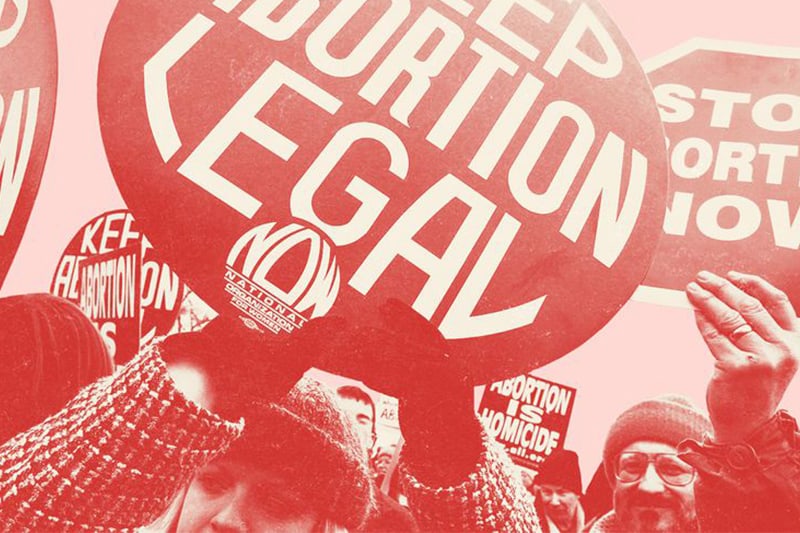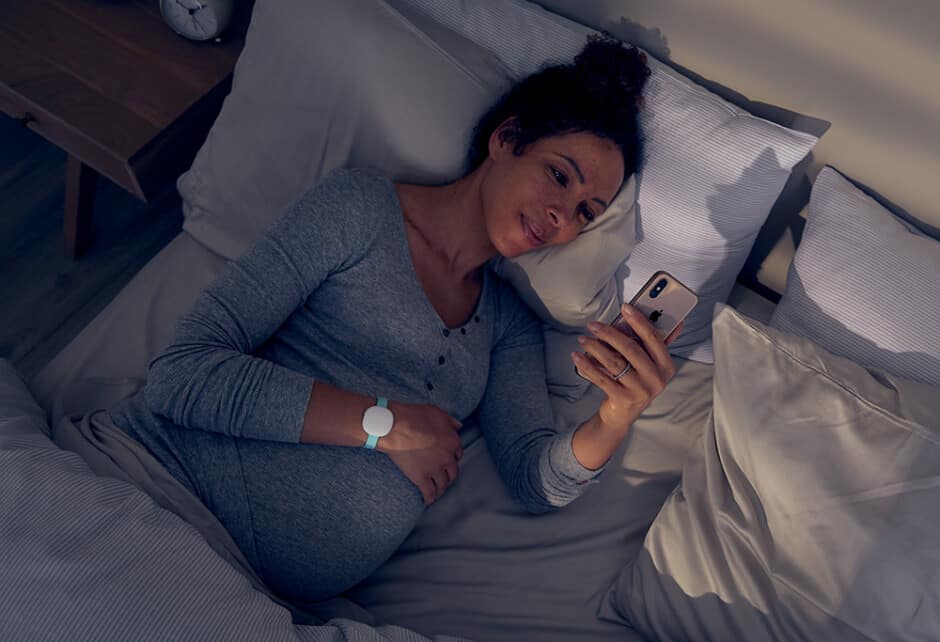
The State Of Abortion Rights
Written by Kate MacLean
Photography by Image Via Elle
Justice Kennedy’s retirement announcement last week whipped the country’s (or the media’s) attention away from the immigration crisis at our southern border. And, while it is vitally important that we don’t allow the news cycle to dictate our attention, this is an announcement that requires our awareness, scrutiny, and voice. Our minds are quite capable of giving both issues their due. Women knew these four years wouldn’t be relaxing or easy, that’s why it began with the March. It is imperative to stay informed, mobilized, and active. The vacancy produced by Kennedy’s retirement is a historic one. While Kennedy was reliably fiscally conservative in his decisions, he was consistently liberal in his defense of women’s and minority’s rights. His successor, if picked by this conservative majority, could rewrite much of American law in the years to come. As David Leonhardt wrote in an op-ed for the Times last week, “In the simplest terms, the Supreme Court is likely to begin siding more often with those who already have power—and against those who don’t have much. After decades of rising economic inequality and consolidation, it is a profoundly worrisome development.” By next week, President Trump will announce his nominee for the seat. Speculation flies in the days preceding a nomination of such gravity. While it serves of little use to join in on the speculation, it is important to understand a few very important things about the appointment of the next justice.
Civil liberties are already in peril with Gorsuch on the bench, but the most immediate concern to liberals when the retirement was announced was the threat to Roe v. Wade and the protections the 45-year-old decision has enshrined. The inner sanctum of the Trump administration has been threatening to overturn this decision since the campaign trail. Trump has said that he believes there needs to be some sort of punishment for those who seek abortion. He vowed in 2016 that if given the opportunity the decision would be reversed in his tenure. Just this past April, a judge struck down the bill that Mike Pence had signed as governor of Indiana that aimed to further restrict abortions in his state. The judge ruled such a bill unconstitutional. Just months prior, Pence had been quoted at a pro-life luncheon, “I know in my heart of hearts this will be the generation that restores life in America. If all of us do all we can, we can once again, in our time, restore the sanctity of life to the center of American law.”
Trump will most certainly come through on a pro-life nominee for the Court. Democrats are already lobbying to get the nomination process postponed to after the midterm elections, but Mitch McConnell has no intention of heeding the request. Republicans have 51 of the seats in the Senate, and Pence’s vote can serve as a tie-breaker if needed. This means the fate of the nominee is likely up to the two pro-choice Republican women senators Lisa Murkowski of Alaska and Susan Collins of Maine. Richard Hasen proposed last week in an op-ed in Slate for large public pressure in the form of protests to call on the two women to block anti-abortion candidates.
Overturning Roe v. Wade would be the final act in what has been a systematic state-based undoing of abortion rights in this country in the past two decades. It is important to have a broad understanding of how these rights have been slowly dismantled and where your rights currently stand, so as to fully appreciate what is at risk.
Federally, the current law based out of the Roe v. Wade decision is that abortion is legal, but may be restricted by the states in any politically viable manner. States have taken to this restriction loophole with drunken enthusiasm creating a web of highly confusing differences and nuanced interpretations of the law. The bare facts are as follows. Forty-three states prohibit late-term abortions unless medically necessary to protect a woman’s life or health. Generally, late-term abortions are considered after 20 weeks. Twenty states outright ban these so called “partial birth” abortions. Forty-five states allow healthcare providers to refuse participation in an abortion. Forty-two of these states extend that allowance to entire hospitals.
According to the Guttmacher Institute, “Eighteen states mandate that women be given counseling before an abortion that includes information on at least one of the following: the purported link between abortion and breast cancer (5 states), the ability of a fetus to feel pain (13 states), or long-term mental health consequences for the woman (8 states).” Twenty-seven states require women wait at least 24 hours between consultation and procedure. Thirty-seven states require minors to involve their parents in some fashion. Eleven states restrict abortion coverage in private plans, making women get additional coverage for abortions at an additional cost.
Abortion clinics have closed in the last decade at a rate of about 6% annually, leaving rural women the most vulnerable. A study found that over 54% of rural counties had neither abortion clinic nor hospital (should a woman want to have a baby).
Curiously enough with all of these restrictions, our country deeply divided, and the fact that abortion is still (ostensibly) legal, the number of abortions has been steadily decreasing every year since the 1980s. The most current numbers stand at just 14.6 abortions per 1,000 women. For comparison’s sake, that number was—at its peak in 1980—29.3 per 1,000 women. Just as there exists many different views on a women’s right to choose, there are an equal number of explanations for this decline. Planned Parenthood cites these numbers as a sign that access to and education of proper contraceptives means that fewer women are having unwanted pregnancies. Pro-life advocates say that this means their “counseling” efforts have changed minds, and that more women are thusly carrying to term more unwanted/unplanned pregnancies. But, pro-choice institutes like the Guttmacher worry that these numbers mean more women are carrying unwanted pregnancies to term because access to a safe abortion has become more elusive, not because they have changed their minds.
Of course, restricted access to safe abortions is not unique to the U.S. Abortion rights vary from country to country, but the World Health Organization estimates that worldwide over 25 million unsafe or dangerous abortions are carried out each year. The WHO says between 4.7 to 13.2% of maternal deaths are a result of these unsafe abortions.
The power and control over women’s bodies is up for grabs. Those in power are bent on restricting wholly this critical and fundamental right to decide when and if to carry a pregnancy to term. Under the guise of saving lives, the white men in power will push this destructive and dangerous reversal of legislation through. While Roe v. Wade could be overturned, it is unlikely that abortion will become federally unlawful. The decision will still be up to your state. This is a handy (albeit depressing) chart. It is important to know where your state stands and what your rights currently are.
The fight for a woman’s right to choose is not a fight to kill babies or fetuses. Pro-choice is not anti-life. It is not pro-murder or pro-death. It is not a fight to use abortion in place of contraception. This is about a woman having complete control over her physical and mental well-being. This is about making sure that no woman, regardless of class, race, age, sexual preference, religion, or immigration status has to carry a baby to term without being 100% okay with that fate. Women are not agentless vessels for future generations. They are not handmaids. This is not Netflix; this is real-life. These women are your mothers and daughters and sisters, and they demand full agency over their entire body. The coming months will tell how truly agentless the white men in power would prefer their women. It is imperative to remain aware, educated, active, and ready to fight for our bodies.
For more on women’s rights, be sure to check out One Year From The Women’s March in the Mother pages.
Share this story



